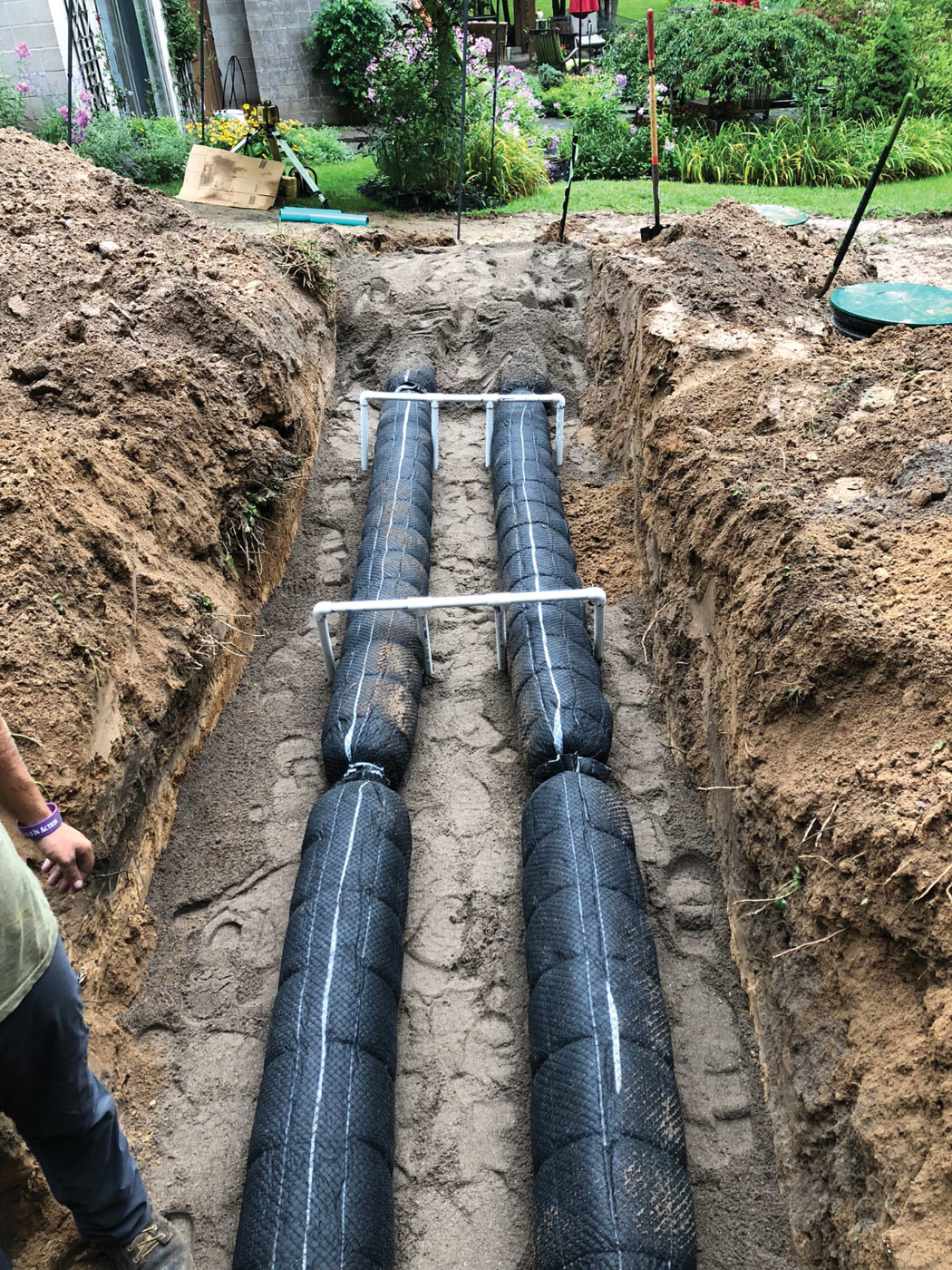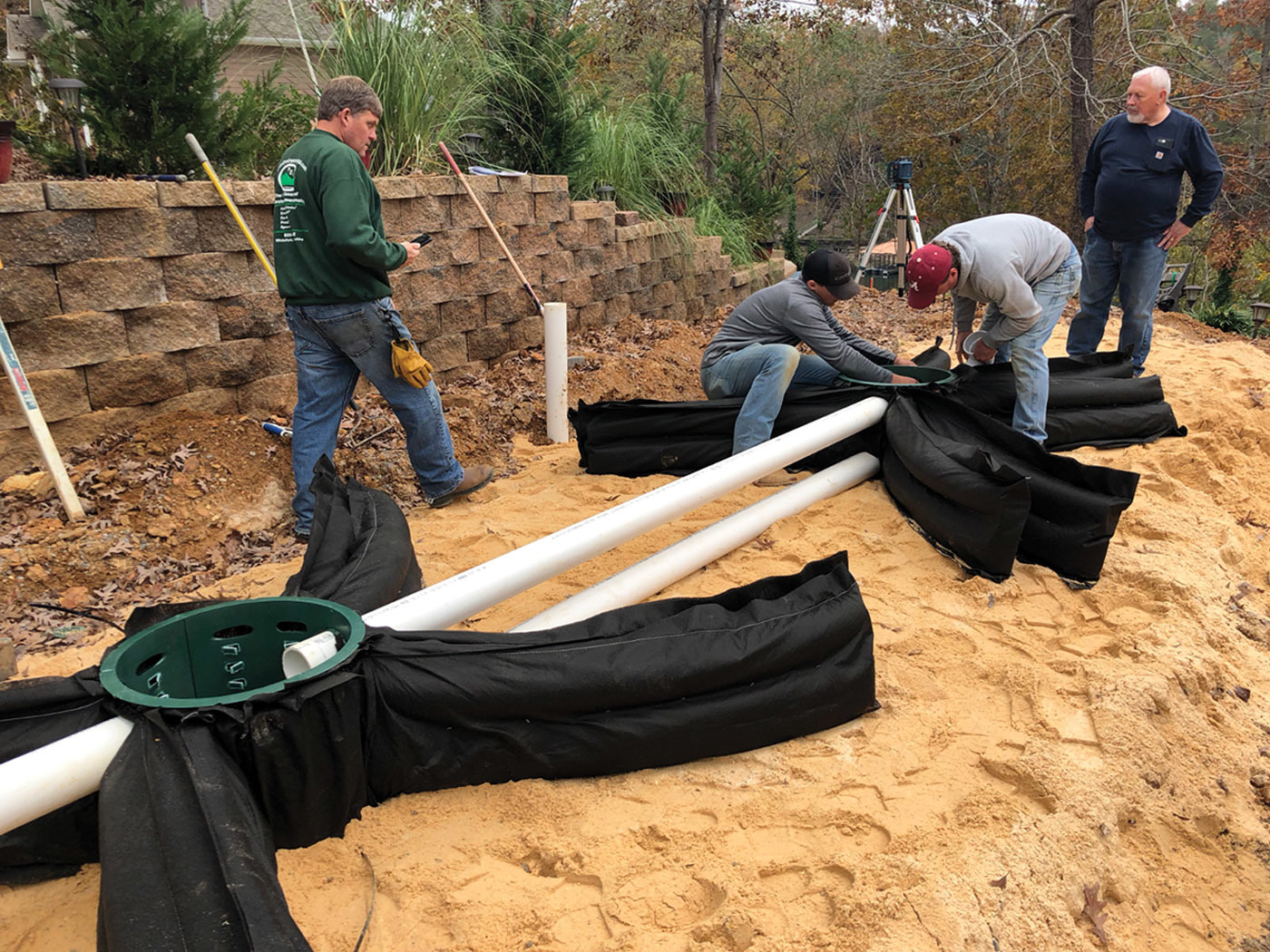Membrane bioreactor system a fit for small drainfield
Problem: A three-bedroom home in Illinois was in need of a septic system repair. It had a 50-square-foot drainfield with a 50-minute-per-inch perc rate. This equates to a septic loading rate of 0.4 gallons per square foot per day, based on 200 gallons per bedroom, which is Illinois code. So, that would be 600 gallons per day.
Solution: A BioBarrier membrane bioreactor system with BihlerTech from BioMicrobics was installed by NET Excavation. The system’s capacity is 3.75 times larger than it technically needs to be. According to the maker, if this was septic effluent instead of MBR Filtrate from a BioBarrier, the code would have required 1,500 square feet of septic field area instead of 50.
Result: The MBR system has served as a permanent fix, requiring minimal maintenance. 800-753-3278; www.biomicrobics.com.
Leachfield system replaces failing residential septic system
Problem: A Pittsford, New York, three-bedroom home septic system installed in the 1970s was failing. The owners needed a replacement but wanted to preserve their extensive investment in landscaping. The available footprint for a new system was limited and included steep slopes, high groundwater and nonpercolating soils. The failing septic system utilized two concrete single-compartment septic tanks: one for blackwater and one for graywater, and both septic tanks discharged to the same leachfield. The naturally sloping site resulted in stormwater flowing toward the existing system and the proposed footprint.
Solution: A 540-square-foot ATL passive advanced treatment leachfield system from Infiltrator Water Technologies was selected for the 330 gpd replacement system. Installation began by abandoning the blackwater tank and then installing two Infiltrator IM-540 tanks. To meet regulations, one IM-540 was installed downstream of the graywater tank to provide a second compartment, and the second tank conveys settled effluent to the ATL system. The leachfield design has three 4-foot-wide-25-foot-long trenches. Due to the tight footprint and extensive landscaping, the installation of the shallow trenches proceeded as the crew worked themselves out of the area. Top-soiling and seeding of the system was completed, and a curtain drain was installed to convey stormwater away from the system. The system was engineered by Rosiek Engineering and components were provided by Kistner Concrete.
Result: The homeowner was happy with the minimal impact to the landscaping. The system is operating well. 800-221-4436; www.infiltratorwater.com.
Passive system a fit for odd-shaped bed
Problem: An older three-bedroom-sized conventional septic system failed on a property in Cullman, Alabama. The space was limited on the small property due to setbacks including a well and retaining wall, allowing only for a triangular-shaped bed and a shallow restriction of 6-inch excavation. The site had a slight slope with a soils perc rate at 60 minutes per inch. There were very few approved products that would be able to fit the site.
Solution: The EnviroFin passive combined treatment and dispersal system from Presby Environmental Inc. (PEI) was chosen. The three-bedroom 450-gpd system included two EnviroFin units pumped to elevation. The system fit the triangular-shaped bed.
Result: The homeowner was pleased to have a system that both treated the effluent and dispersed within the space restrictions of the site. 800-473-5298; www.presbyeco.com.








